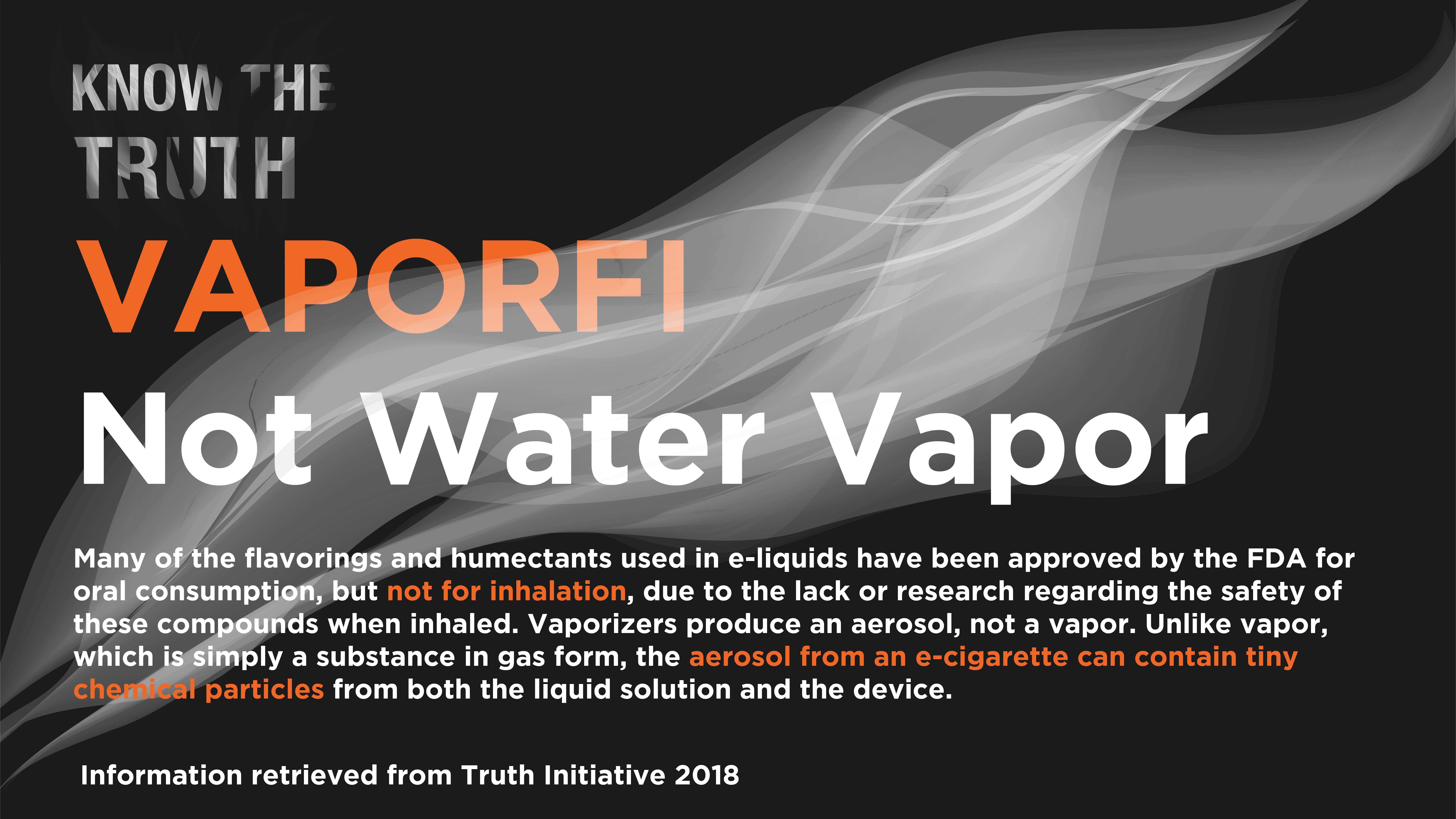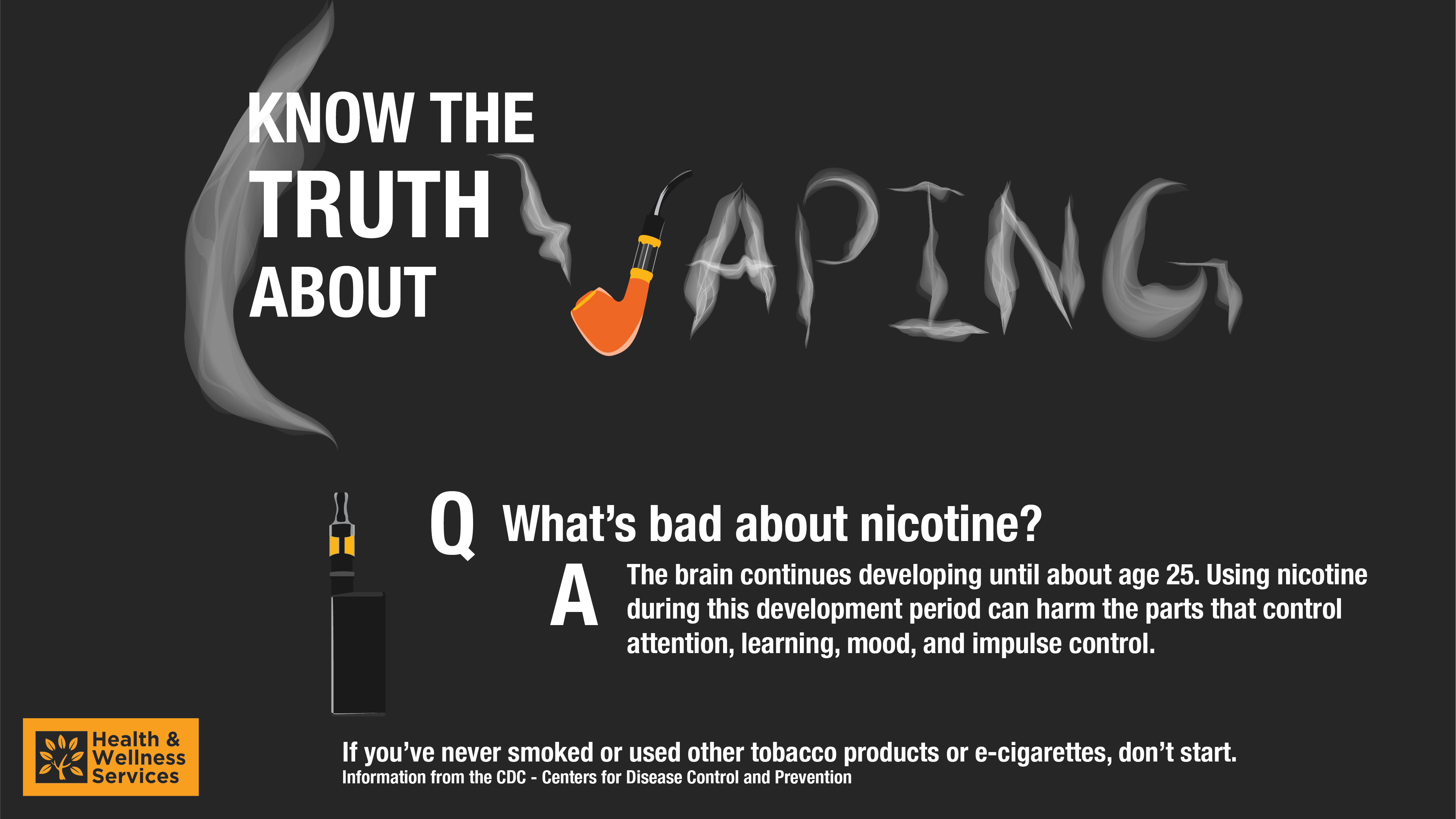Juul, Suorin, the Loon, Kanger, VaperFi, E-leaf, Novo, JustFog. They come in all shapes, sizes and colors. Some are so compact that you may not even realize it. Vapes have become increasingly more popular because of their discreet appearance and ease of use.
This new and popular trend is having detrimental effects on the bodies of people globally. While it may be “an alternative to smoking cigarettes”, it should not be considered a healthier alternative. The vaporization process does eliminate some of the harmful chemicals in the smoke, but there are plenty of other risks associated with vaping.
You can pretty much smoke any kind of drug in an e-liquid. In vape juice, they typically will include nicotine, propylene glycol (used as antifreeze), heavy metals like nickel, tin, lead and other chemicals that are linked to serious lung disease.
We all remember the photos of hairy tongues from health class, teaching us about how dangerous cigarettes can be, but do you know the health effects of vaping? Some things like gum disease and teeth loss, bloody sores in the mouth, smokers cough. Also, you can get poisoning by swallowing or absorbing e-cigarette liquid. The Mayo Clinic has done research to observe the lungs of people who have become ill after vaping nicotine or marijuana. All 17 samples of lung tissue show a pattern of an injury looking like a chemical burn injury.
What we do know is that Nicotine is highly addictive and it can harm the developing brain. High-nicotine e-cigarettes can alter nerve cell functioning, change brain chemistry and harm brain development. No matter how it is delivered, nicotine is addictive and harmful for youth and young adults.
The CDC has recently announced that 38 states and a US territory reported 530 cases of lung injury. A total of seven cases of death have now been confirmed. With this, the FDA has launched an investigation, because we don’t have enough information yet to determine if e-cigarettes are causing these incidents.
To bring it back home, in Minnesota, there have been 52 confirmed and probable cases of vaping injury in the State of Minnesota.
We collected some data ourselves with the Boynton Survey in 2018: 13.5% of WSU students report using an electronic cigarette in the past 30 days. WSU is a smoke-free campus, and has been since January of 2009. This includes vaping! If you live on campus, you can have an e-cigarette, but you cannot smoke on campus property (especially in the residence halls).
Truly, we don’t know much about e-cigarettes. There is limited data that provides an accurate description of what users are ingesting. The Truth Initiative states it best: because we don’t know about the long term effects, people who vape are essentially human test subjects.
You may think “it’s not going to happen to me,” but the dangers are closer than you think.
Looking for support to help you quit?
Become an Ex: A free digital support app.
Feel free to call the Minnesota Quit Smoking Helpline to talk to someone 1.877.270.7867.

